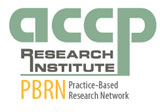
When developing and implementing a research project, there are several important considerations. The ACCP PBRN has posted a series of communications that address many of these key components: (1) how to make a great research question, (2) how to use your clinical practice and the PBRN as your “laboratory,” (3) the POWER of numbers and how the PBRN can help you meet your “n,” and (4) how to use the resources of the ACCP PBRN to both conduct and statistically support your study analysis.
One additional important, and often stressful, component of human subjects’ research is navigating the institutional review board (IRB) process. As both a clinician-researcher and senior IRB member, I sympathize from both sides. Allow me to share a few things I’ve learned through the years:
-
Depending on your practice location, approval by a “central” IRB may be sufficient. The ACCP PBRN has access to and uses a central IRB to review and approve research projects, and its resources are accessible to PBRN researchers as well. All IRBs have the same main purpose: to provide ethical and regulatory oversight of research that involves human subjects, give guidance to ensure sound research design and scientific integrity, and determine whether the research contributes to generalizable knowledge and is worth exposing subjects to risk.
-
Before embarking on the IRB journey, seek out your local IRB contact before submitting any projects. If in doubt, look for a contact with the title of Regulatory Affairs Associate or Certified IRB Professional (CIP). Ask this professional whether central IRB approval is acceptable at your institution; obtain the necessary forms, time line, and deadline information; and acquire essential items to facilitate the navigation of your local IRB process. In the long run, this will save both the researcher and the IRB time and frustration.
If approval by a central IRB is acceptable, your workload will be greatly minimized, likely allowing the PBRN study a more expeditious start. Alternatively, if your site also requires local IRB approval, the contact made is invaluable. Most IRBs are very welcoming and helpful, with the ability to guide you through the nuances of their process.
-
Finally, ensure your Human Research Protections certificate is current. Most IRBs require that this certification be performed at least annually, and it is a “hard stop” in the IRB process. As a benefit of membership, ACCP PBRN members have access to the Collaborative Institutional Training Initiative (CITI) Program curriculum course at no charge, which credentials members to participate in PBRN research.
Each IRB is slightly different, but with patience, persistence, and assistance from the ACCP PBRN, your association with an IRB can lead to a great partnership, ensuring balance between solid scientific design and merit and protections of the human subjects being studied.